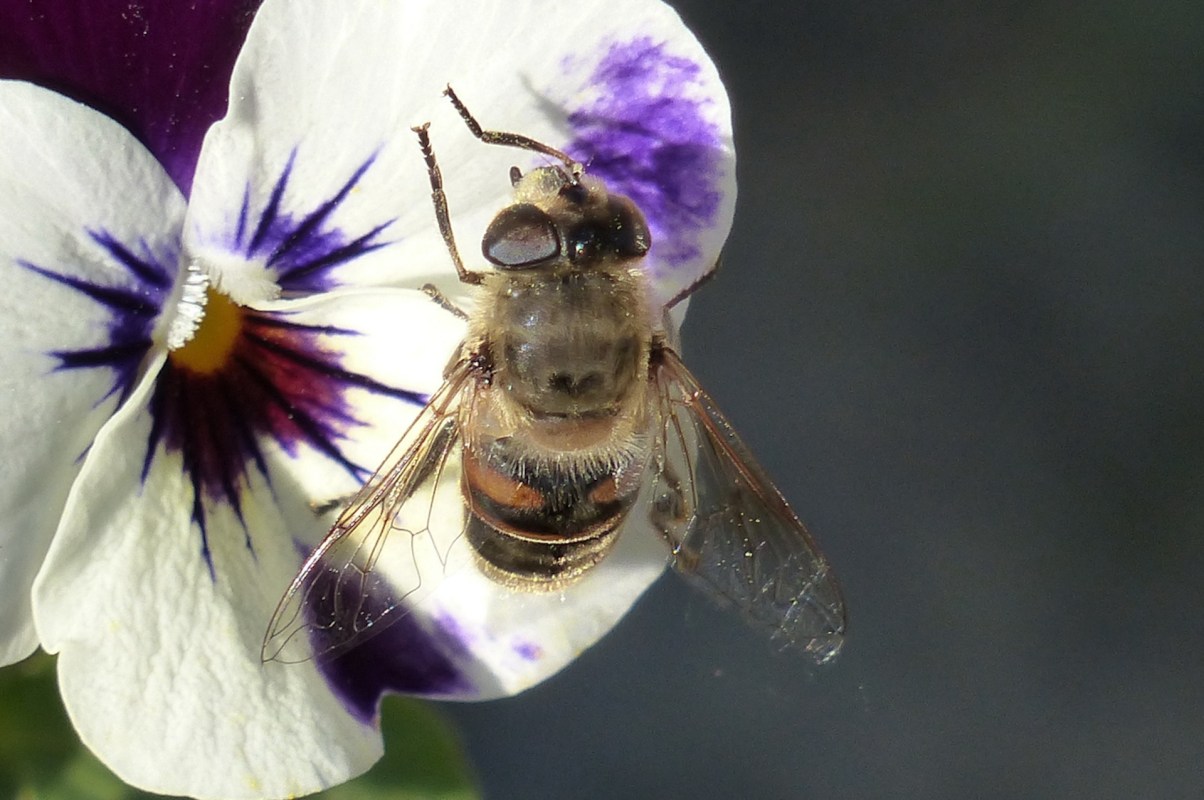Pansies are having less sex. That's the punchline of a recent study, as summarized in The New York Times, which reported that certain flowers are evolving to self-fertilize more often as populations of bees and other pollinators drop.
The study, conducted by scientists in France, indicated that environmental changes that have caused pollinators to decline have also resulted in rapid flower adaptations.
Studying field pansies common in Europe, the researchers found that the modern versions of these plants are self-fertilizing, or "selfing," at a rate 27% higher than 1990s pansies, the Times reported.
Field pansy plants usually reproduce sexually with one another when bumblebees and other pollinators transfer pollen among them. Alternatively, these pansies can use their own pollen to self-fertilize their seeds.
"Selfing is more convenient than sex, since a flower does not have to wait for a bee to drop by," wrote Carl Zimmer in the Times. "But a selfing flower can use only its own genes to produce new seeds. Sexual reproduction allows flowers to mix their DNA, creating new combinations that may make them better prepared for diseases, droughts, and other challenges."
Besides increased self-fertilization, the researchers also observed the pansies evolving toward smaller flowers and less nectar. Both of these changes make the plants less appealing to bees and reinforce a declining interaction with pollinators, which the study also documented.
According to the Times, the speed at which changes have occurred took the scientists by surprise, as these adaptations happened within just 20 generations.
"That's rapid evolution," Pierre-Olivier Cheptou, the University of Montpellier ecologist who led the study, told the newspaper.
The Times article pointed to human activities as key drivers that have affected pollinators. These factors include the use of toxic pesticides and reductions of pollinator-friendly habitat.
If more flowers shift toward self-pollination (and away from genetic diversity), it could have widespread effects on the resilience of plants. Plants shifting away from a focus on cross-pollination could also make "a bad situation worse" for pollinators — especially if plants reduce insect-sustaining nectar to use their energy in other ways, Dr. Cheptou told the Times.
Other researchers weighed in on the study's implications, as well.
The results were "impressive, if disheartening," Susan Mazer, a University of California, Santa Barbara researcher not involved in the research, told the Times.
Mazer also noted that rising global temperatures put further pressure on flowering plants and may reduce the time in which they can provide nectar before they wilt.
That said, the broader effects are still uncertain. As Sasha Bishop, another scientist not involved in the research pointed out, flowers can take a different tack by "investing" energy to attract scarce pollinators (such as through bigger blooms or more nectar) rather than selfing.
"Both outcomes are perfectly reasonable," Bishop told the Times.
Join our free newsletter for weekly updates on the coolest innovations improving our lives and saving our planet.









